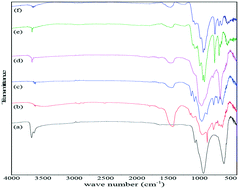Comparison of analysis of asbestos fibres in drinking water using phase contrast microscopy and micro-FTIR spectrometry with scanning electron microscopy and energy-dispersive X-ray spectroscopy
Abstract
Asbestos fibres are recognized as a group one carcinogen by the International Agency for Research on Cancer (IARC), and may cause environmental pollution and potential health hazards upon entering drinking water sources. However, few studies have investigated asbestos in drinking water because of limited methods for such analyses. Additionally, the existing electron microscopy methods are usually expensive and may not be easily accessible in many laboratories. In this study, phase contrast microscopy (PCM) and micro Fourier transform infrared spectroscopy (micro-FTIR) were proposed to identify asbestos in water for the first time. Water samples were qualitatively analysed using micro-FTIR, and the presence of asbestos fibres was confirmed. Phase contrast microscopy was then used to enumerate the asbestos fibres. The results obtained using the developed method were verified by scanning electron microscopy (SEM) with energy-dispersive X-ray (EDX) analysis. The results indicated that the combined PCM-FTIR represents an economical method for rapidly determining the presence of asbestos fibres in drinking water and their quantitative analysis. The proposed protocol is a potential alternative to electron microscopy for the analysis of asbestos fibres in drinking water and is easier to apply in the laboratory.



 Please wait while we load your content...
Please wait while we load your content...